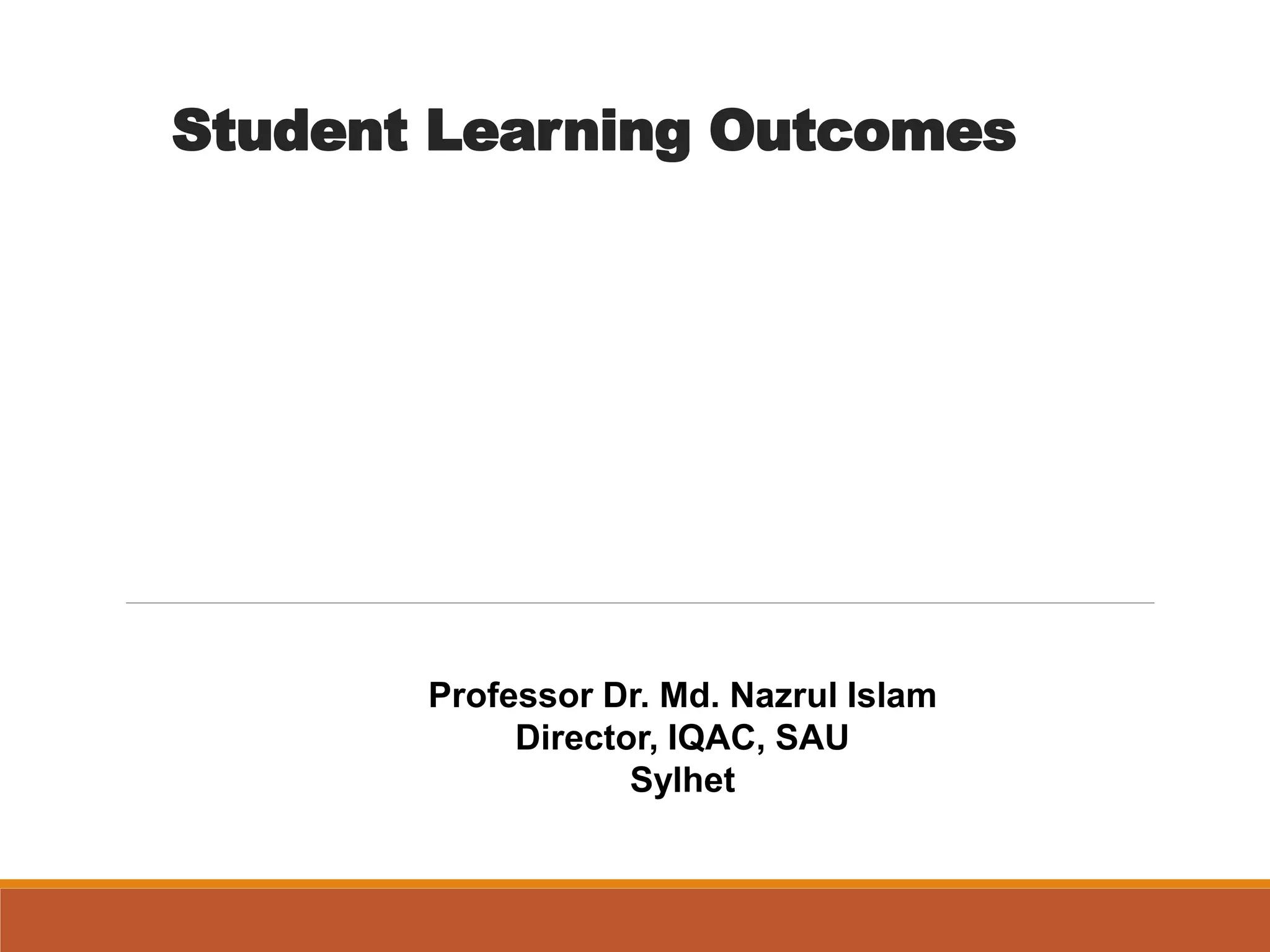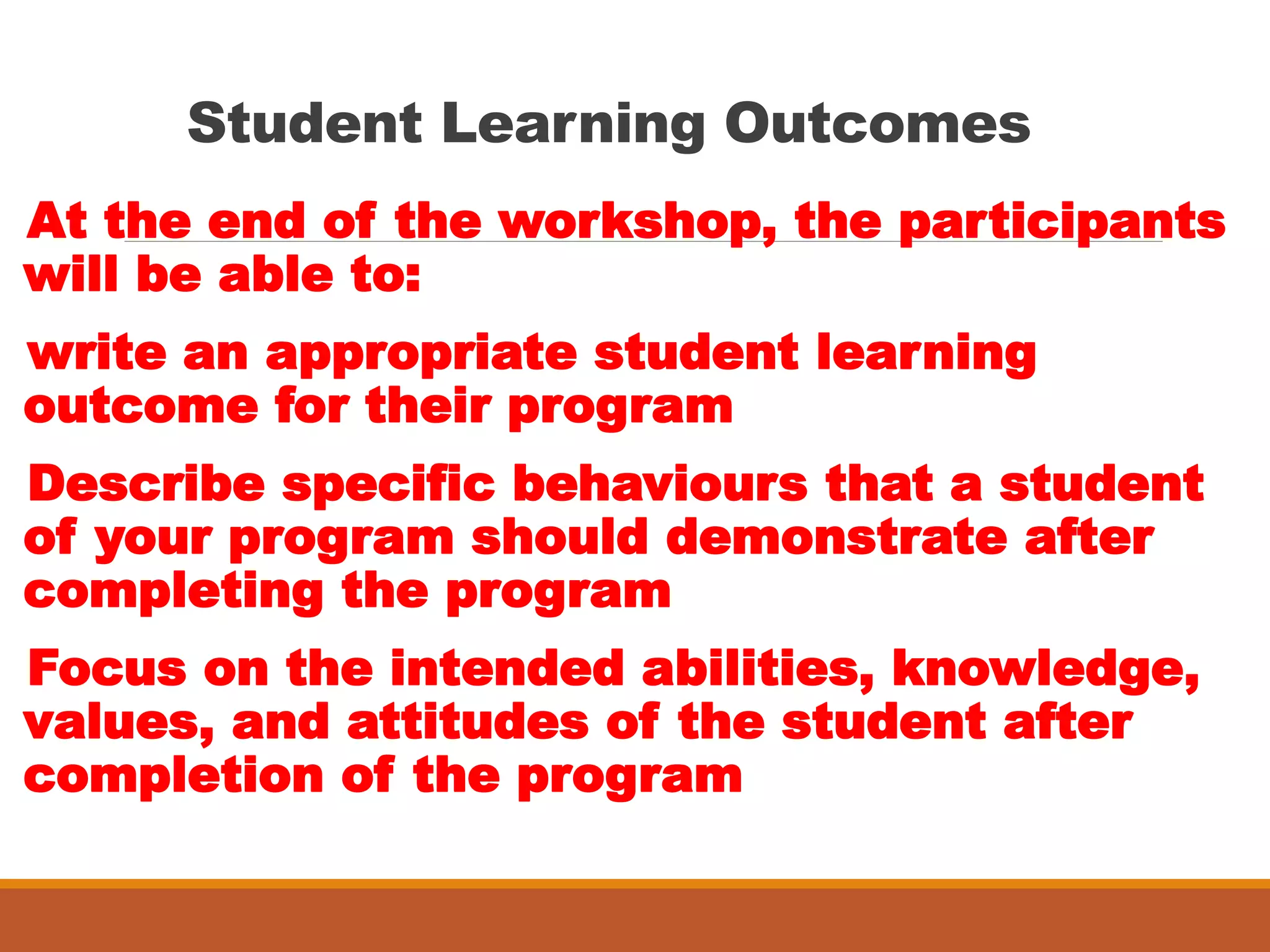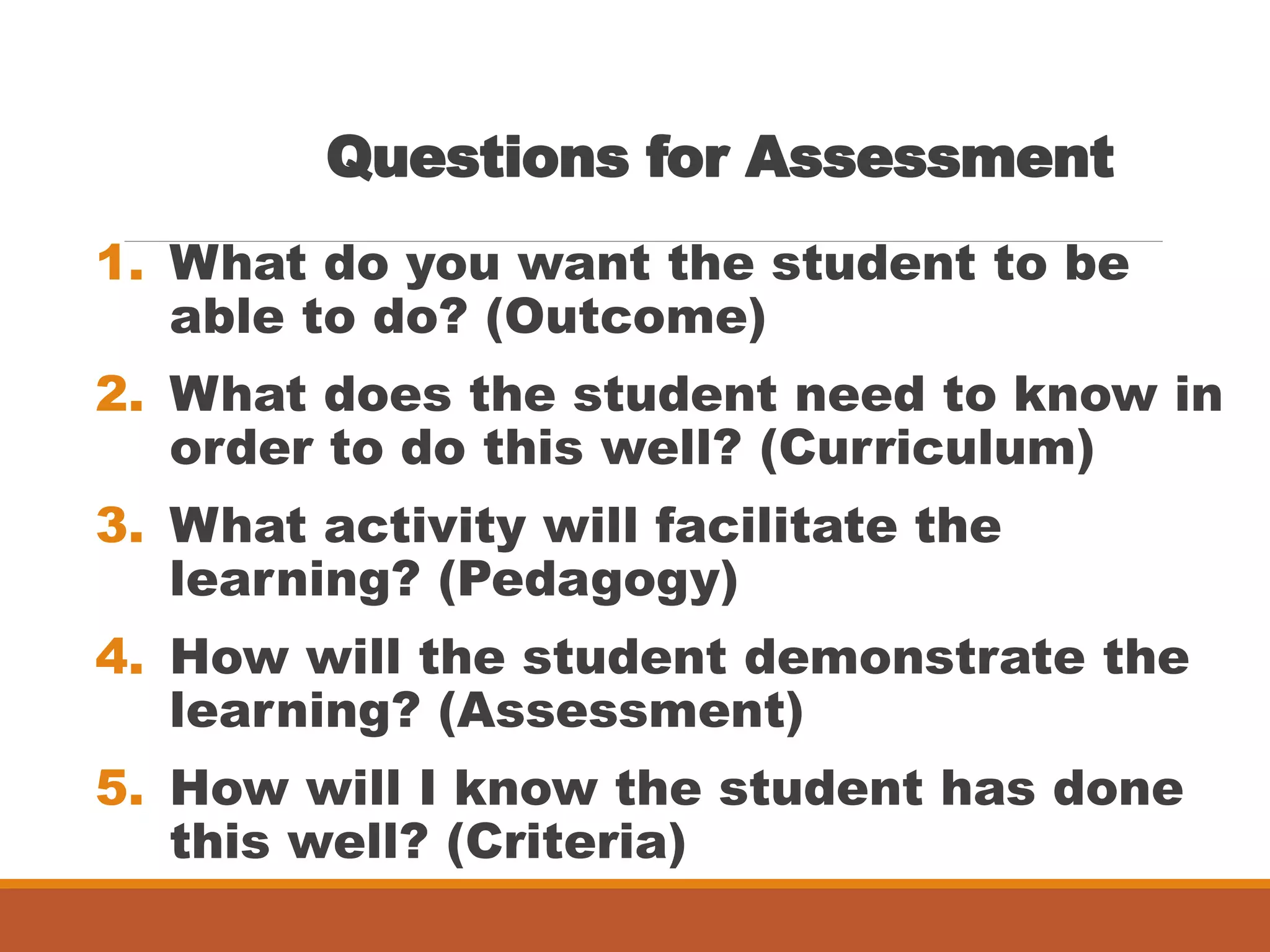The document outlines the process and importance of developing Student Learning Outcomes (SLOs) for educational programs. Participants in the workshop will learn to create measurable SLOs that reflect the knowledge, skills, and attitudes students should develop by the end of their program. It emphasizes using Bloom's Taxonomy to guide the formulation of outcomes and assessment strategies to ensure effective learning experiences.




























